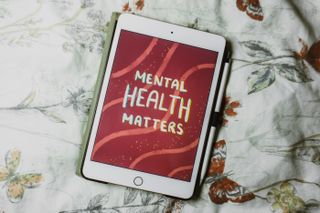These have not been easy times for educators or students.
Stress from the pandemic, social unrest, and more recently, the war in Ukraine, have all led to widespread reports of a spike in behaviorial incidents among students. In October 2021 the American Academy of Pediatrics declared an emergency in child and adolescent mental health.
To address these mental health challenges, schools need to implement a multi-tiered system of supports (MTSS), say psychologists Laura E. Rutherford and Brittany Zakszeski. Rutherford is director of training and a research psychologist at Devereux Advanced Behavioral Health Consulting, a behavioral healthcare nonprofit, while Zakszeski is a training and consulting specialist at Devereux Center for Effective Schools.
Building a Multi-Tiered System of Supports Framework: Recognize That a Majority of Mental Health Services Are Provided in Schools
More than 80 percent of mental health services are delivered within the school setting, Rutherford and Zakszeski wrote in a recent playbook about social and emotional behavior in schools.
“Most mental health services are provided in schools, for a variety of reasons,” Rutherford says. “Access to care and services is much easier in schools, and it's easier to refer to school-based services.”
Receiving mental health services also has less stigma when it is provided in schools rather than in the community, Rutherford says. This is why a robust MTSS framework is so important for schools.
Building an MTSS Framework: Establishing Tiers of Support
Rutherford and Zakszeski suggest coordinating your MTSS framework around three tiers.
Tier 1: “A really strong MTSS program would have supports for all students universally across the school,” Rutherford says. This should include social-emotional learning programs and perhaps some school-wide trauma-informed classroom management practices and supports. In addition, there should be a mechanism to identify students who are in need of additional support and therefore need Tier 2 interventions, Rutherford says.
Tier 2: This should include targeted group-based interventions for students who are more at risk, and there also should be a mechanism to see if kids are doing well with these targeted group programs. If they’re not thriving, they need to be given additional Tier 3 level support.
Tier 3: Students who were not sufficiently helped by Tier 1 and 2 interventions should get targeted individualized support. This might be individual school counseling or referrals to outside agencies, or outside agencies providing services within the school itself, Rutherford says.
Building an MTSS Framework: Make it Comprehensive
A good MTSS framework should encompass academics and mental health.
“The type of MTSS framework that Laura and I really recommend is an integrated one that is focused on mental health alongside other indicators of social wellness, emotional wellness, and behavioral wellness,” Zakszeski says. “We're really saying, ‘Let's not have all these different programs and frameworks, and service-delivery mechanisms for addressing those different types of student needs. Let's have one integrated connected framework that's really advancing all of those types of outcomes.’”
This type of framework is necessary because student setbacks are rarely siloed. “We know any challenges in any of those areas could really create significant barriers to students’ learning,” Zakszeski says.
Building an MTSS Framework: Telehealth and Being Proactive
Telehealth for mental health is an increasingly popular option for students. “Although these are not school-based mental health services, we certainly are coordinating with community agencies and providers,” Zakszeski says. “There is some research to suggest there are in some ways fewer barriers and more attendance and commitment to treatment if telehealth is an option, especially for some adolescents in some circumstances. So it could be a way to supplement the school-based services that are being provided primarily within the walls of the building in the schools that we're working in.”
Given the current social pressures, Rutherford says that school leaders should plan on their students needing assistance. “Rather than saying, ‘Are there mental health needs?’ We should assume everyone's going to need some sort of support now because students have missed a lot of socialization and normal interactions on top of academics and other concerns.”

